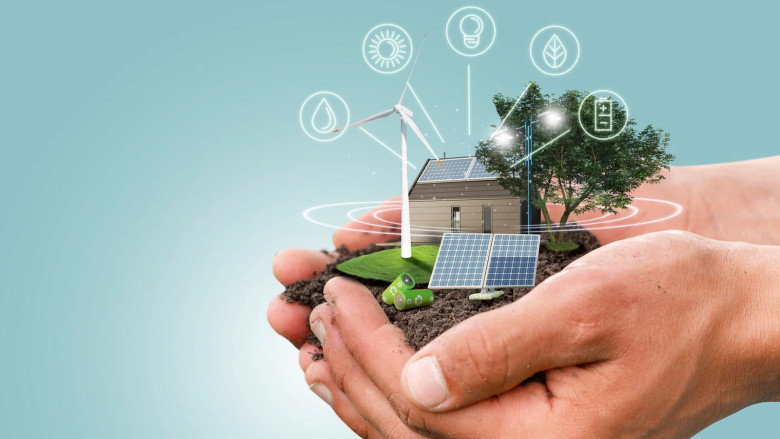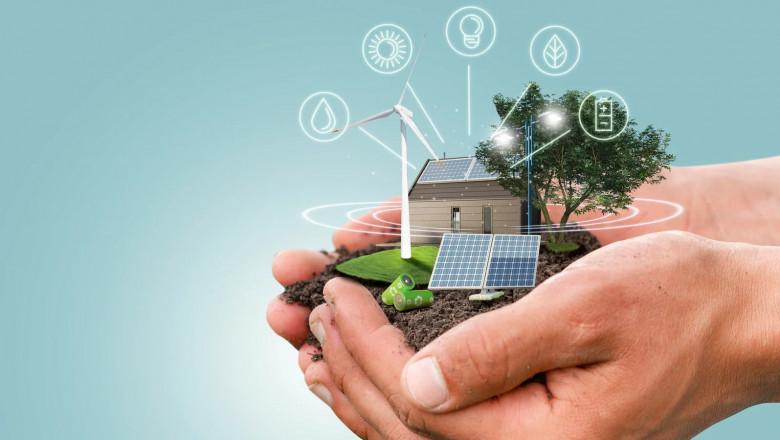views
As the world shifts toward a more sustainable future, the integration of solar and wind technologies into building design is revolutionizing the way we think about energy use in our cities. These smart structures—once mere concepts—are now becoming functional realities, showcasing renewable energy at work like never before. By tapping into abundant natural resources, these buildings not only reduce carbon footprints but also serve as models for innovation and environmental responsibility.
The Rise of Renewable Energy in Architecture
Urban infrastructure is undergoing a profound transformation. Architects and engineers are embedding renewable systems into building frameworks, shifting from passive green practices to active, energy-generating designs. This change aligns closely with rising environmental consciousness and stricter global emissions targets.
Solar Power Integration in Modern Buildings
Rooftop panels are just the beginning. Innovative applications now include building-integrated photovoltaics embedded in glass façades and solar shingles that blend seamlessly with traditional roofing. These innovations turn every surface into a generator, proving that renewable energy at work can be as aesthetic as it is functional.
Harnessing Wind Energy in Urban Design
Wind turbines, traditionally seen on open plains, are being adapted for urban use. Vertical-axis wind turbines are especially well-suited for rooftops and skyscraper edges, where turbulent wind flows can be harnessed efficiently. Designers are strategically placing these systems to complement solar energy, ensuring a consistent renewable supply.
Advantages of Renewable-Powered Buildings
These buildings offer reduced energy costs, helping owners and tenants save significantly on utilities over time. They drastically cut carbon emissions, contributing to cleaner air and a healthier planet. With the ability to operate independently from the grid or even feed energy back into it, they also promote energy resilience and self-sufficiency. In the real estate market, properties powered by renewable energy often attract premium value due to their eco-conscious appeal and long-term cost savings.
Challenges and Solutions in Implementation
While promising, integrating renewable systems comes with hurdles including high installation costs, ongoing maintenance, and compliance with regional regulations. Fortunately, technology is evolving rapidly, making solar and wind systems more affordable and efficient. Government subsidies, tax incentives, and forward-thinking policy shifts are also helping to ease adoption and encourage wider implementation.
Real-World Examples of Sustainable Structures
The Edge in Amsterdam stands as a beacon of energy-efficient architecture, equipped with intelligent solar systems and sustainable design throughout. The Bahrain World Trade Center features three integrated wind turbines, providing a significant portion of the building’s energy needs while adding a futuristic aesthetic. In Seattle, the Bullitt Center is celebrated as a net-zero structure that utilizes solar energy and rainwater harvesting to support its daily operations entirely off-grid.
Future Trends in Renewable Energy Architecture
The next wave of sustainable buildings will go beyond current technologies by integrating AI and IoT systems that enable real-time energy monitoring and optimization. Hybrid energy models combining solar, wind, geothermal, and even kinetic energy will help buildings adapt to changing conditions and usage patterns. Sustainable materials, passive cooling systems, and community-based energy sharing networks will also play major roles in shaping the cities of tomorrow.
For more info
https://bi-journal.com/solar-and-wind-powered-buildings-of-tomorrow/
Conclusion
The buildings of tomorrow are no longer just theoretical marvels—they’re practical, scalable, and already making a difference. From city centers to remote regions, the sight of renewable energy at work in the form of solar panels and wind turbines is becoming more common. As adoption grows, these innovations promise not only environmental rewards but also economic and social benefits, proving that sustainable design is not just a trend, but the future of urban development.






















Comments
0 comment